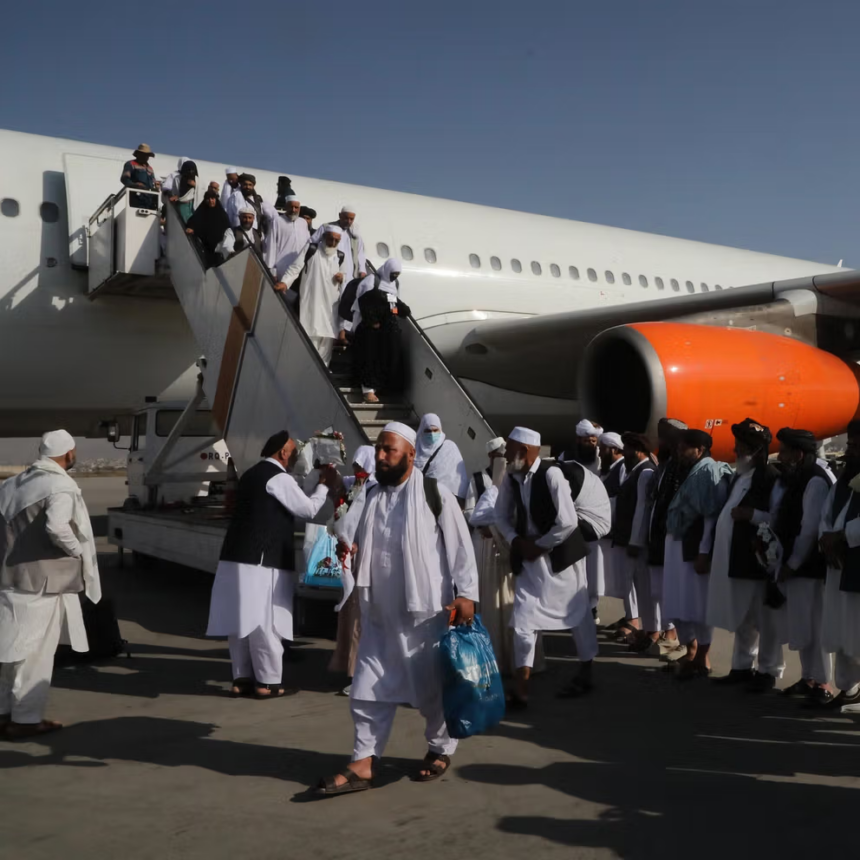RASC News Agency: The first group of Afghanistani pilgrims has returned to Kabul following the completion of the Hajj pilgrimage in Saudi Arabia. According to statements issued by the Taliban-controlled Ministry of Hajj and Religious Affairs, 356 pilgrims from Kabul and Laghman provinces landed at Kabul International Airport on Wednesday, June 11, aboard a flight operated by Kam Air. This return marks the beginning of a multi-phase repatriation effort following this year’s Hajj, which, according to Taliban officials, included approximately 30,000 Afghanistani pilgrims. The ministry claims that 97 outbound flights coordinated primarily through domestic Afghanistani airlines facilitated the transport of these pilgrims to Mecca and Medina. However, the lack of independent verification has raised questions regarding the transparency of the selection process, especially given the Taliban’s record of discrimination and exclusion, particularly toward women.
In a highly publicized reception, Zar Mohammad Haqqani and Azizur Rahman Mansoor, two senior figures within the Taliban-run ministry, were present at the airport to welcome the returnees. Taliban authorities asserted that this year’s Hajj operations were conducted “smoothly and without incident” a narrative frequently employed by the regime to distract from the worsening human rights crisis at home. The ministry has announced that return flights will continue in the coming days, with arrivals scheduled at multiple provincial airports to facilitate the return of all pilgrims to their respective regions. The regime has characterized the operation as a logistical success and a testament to its “governance capacity” a claim widely disputed by civil society observers and humanitarian organizations.
What remains conspicuously unaddressed, however, is the status of women pilgrims. Under the Taliban’s extreme gender apartheid policies, Afghanistani women are largely barred from international travel unless accompanied by a male guardian. There has been no transparency regarding the inclusion of women in this year’s pilgrimage, and no independent reports have confirmed whether any female pilgrims were permitted to participate at all. While the spiritual significance of Hajj continues to resonate deeply among the people of Afghanistan, the Taliban has increasingly sought to use religious events as propaganda tools to project a false image of legitimacy and competence. This latest operation framed by Taliban propaganda as a demonstration of administrative strength stands in sharp contrast to the regime’s brutal suppression of women, ethnic minorities, journalists, and former government employees.
Moreover, the return of pilgrims comes at a time when the country remains deeply engulfed in humanitarian and economic crises, largely exacerbated by the Taliban’s isolationist policies and systemic repression. In this context, the ceremonial reception of Hajj pilgrims serves more as a public relations exercise than a reflection of genuine state functionality. As the repatriation process continues, international observers remain concerned about the broader implications of Taliban control over religious institutions, particularly the potential politicization of religious rites and the instrumentalization of faith for authoritarian ends.






